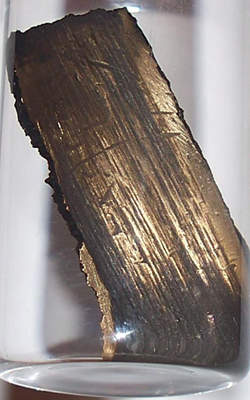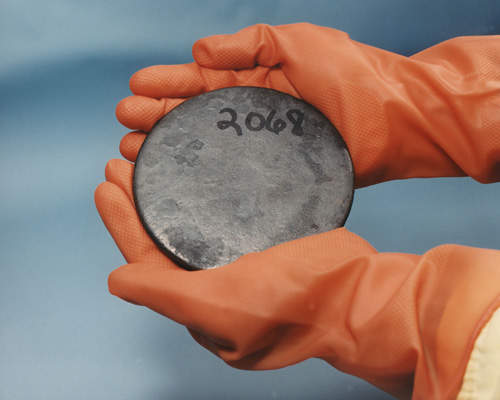The Kuriskova uranium deposit is located 8km north-west of Kosice, an industrial city in eastern Slovakia. The mine is owned and operated by Tournigan Energy and has an established reserve base of 32km2. The mine’s initial phase of metallurgical testing was completed on 3 November 2009. Results of this test indicated 90% uranium recovery. Production is schedule to begin within four and a half years.
The Kuriskova deposit was discovered in 1985. Before the disintegration of the Soviet Union, the mining and exploration activity of the deposit was undertaken by state organisations. Tournigan Energy acquired the mine and its surrounding areas in 2005.
Reserves
The Kuriskova deposit contains 14.65 million pounds of uranium indicated at 0.558% in the main zone. An additional 17.90 million pounds of inferred reserves at 0.215% U3O8 and an assumed grade of 0.05%U are found in all the other zones.
The deposit also hosts 3.26 million pounds of inferred molybdenum resource with an assumed grade of above 0.05%U.
Geology
The mine lies on a largely strata-bound belt of uranium-molybdemum deposits. Ore bodies are hosted in a metavolcanic and sedimentary rock sequence belonging to the Permian age. The deposit has a north-west/south-east strike and dips south-west at 450 to 600. The main zone of the deposit lies at a depth of 120m below the surface and extends 650m. It is characterised by dips with thickness ranging from 2m to 8m, strike and dip extending many hundreds of metres and deposit
average grades ranging from 0.1% to over 0.5% uranium.
Mineralisation
Minerals are hosted in a volcanic-sedimentary unit found within a large regional u-shaped syncline that is characterised by several thrust and reverse faults as well as high-angle normal faults. The unit hosts two zones of mineralisation – the main zone and the hanging wall zone.
The main zone, developed along the contact of overlying metamorphosed volcanic rocks and an underlying unit of metamorphosed sediments, hosts 68% of the total uranium deposits. Most of the mineralisation is hosted within a sheared andesitic volcanic unit with rarely any mineralisation occurring in the underlying sediments. Weaker minerals associated with stockwork veining are hosted in the overlying hanging wall zone.
Mining
According to the preliminary assessment, the deposit will be mined using underhand cut and fill method with cemented whole-tails paste backfill. Geotechnical and hydrogeological data obtained from drilling that began in September 2009, revealed the possibility of recovering minerals through pressure oxidation utilising a whole ore leach process. A conventional technology used commonly for treating uranium, the leach process uses an alkaline (carbonate) media at a P80 150 mesh-sized grind.
Production
The mine will produce 750-800t/d of mineralised material. Production will take place simultaneously on five separate mineralised horizons to ensure this rate. Two underground facilities, including twin access portals with two additional ventilation portals, will be constructed. In order to access the minerals at an elevation of 208m, a twin decline shaft will be sunk 3,000m at a -5% grade. After the minerals are extracted at 208m elevation, the ventilation shaft will be excavated to the
surface. Other underground facilities including the paste plant will then follow.
Transport Infrastructure
The deposit lies near to the main road connecting Kosice and the Spišska Nová Ves town in the north-west, making it highly accessible. A network of narrow unsurfaced tracks that cut through the forest off the main road provide easy access to the mine area.





